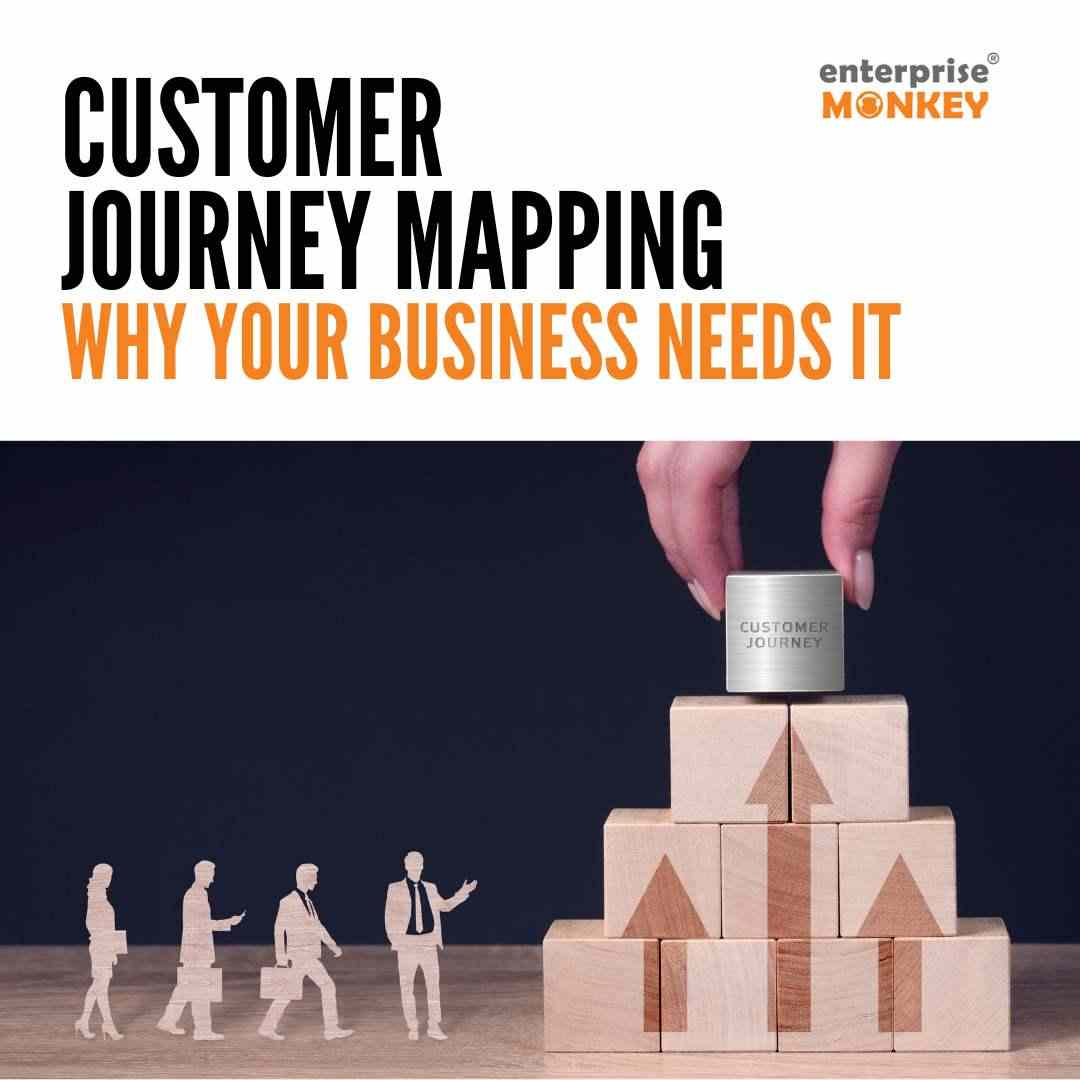If you ever get involved with your developers in any software development project, you must have heard them say they follow an agile development methodology to get your product developed.
You sure must have mixed ideas on what it is and how exactly it benefits you.
Here is a comprehensive article on Agile Development Methodology that’ll have answers to all your queries.
Agile Development methodology was coined in 2001 with Agile Manifesto getting its momentum no time after it.
Here is a screenshot from pmi.org that states the estimated no. of companies that are reported using Agile approaches sometimes, often, or always.

These numbers are not just indicative of its popularity but also its effectiveness and reliability. In this article we will discuss exactly what agile methodology is and how it is implemented, also cover the impacts that its variants will have on the overall performance of the product.
So sit back and focus!
If I were to explain Agile development in one picture, this is how I’d do it:
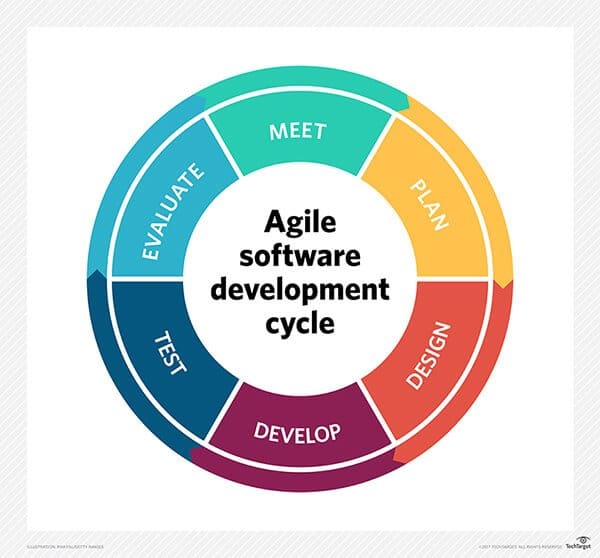
Agile development, however, is not a stand-alone term. It is an umbrella term that has several agile methodologies under its name. These include Scrum, XP, Crystal, FDD, Lean and DSDM. After years of development and evolution, lean practices have also emerged as a wonderful agile methodology and so come under the agile development illustration here:
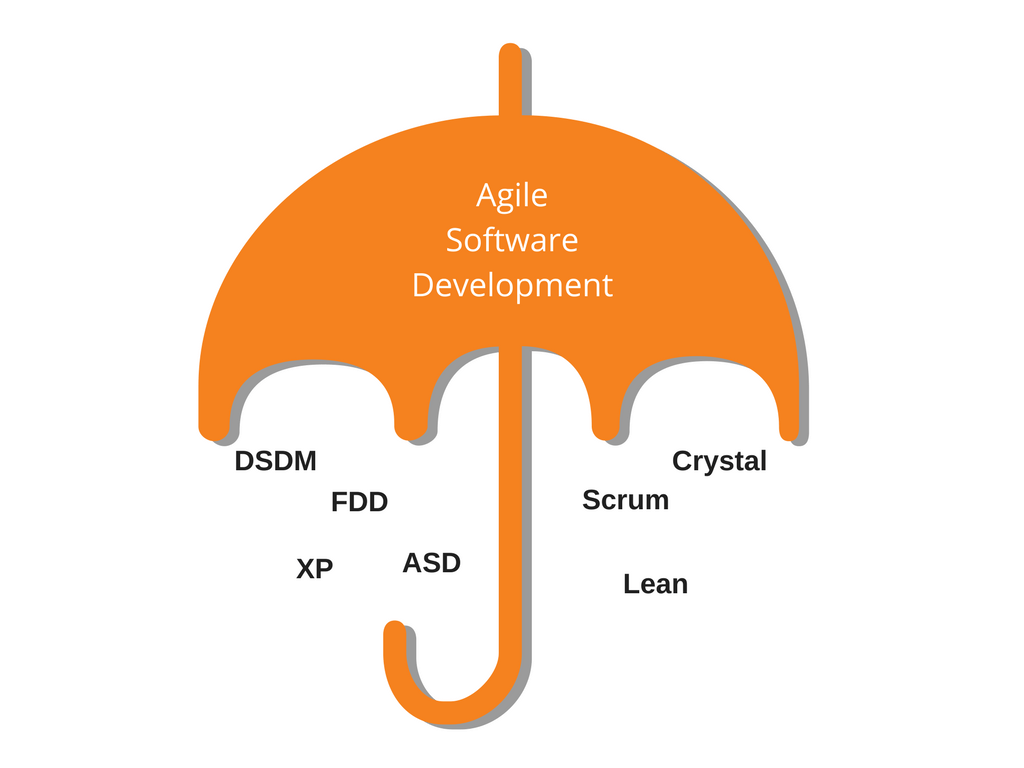
Yes. These all terms seem really hard to deal with.
But the good news is, they’re not! I’ll unfurl them one by one to give you an insight on how greatly these techniques work to make end products run hale and hearty.
Types of Agile Methodology
Scrum
Scrum is one of the approaches that influenced the Agile Manifesto, which formulates a set of values and principles to guide decisions on how to make higher-quality software faster. Think of it as a framework managing a process, rather than a methodology where everybody in the team is assigned roles.
There are these core roles for developing the product:
- Product Owner
- Development Team
- ScrumMaster
- Stakeholders
- Managers
Work is divided into sprints, and there is a ‘release’ after every sprint that is sent for the review.
Here is how everything flows from the product owner to team; thereafter regular sprint meetings are conducted to implement feedback with everything under the centralised control of a ‘scrum master’. Here’s how the methodology goes about:

Feature Driven Development
As the name implies, features are the gist of FDD.
A feature is a trivial, client-valued function expressed in the form <action><result><object>
For example, “Estimate the sale”, “Validate the password of a user”, and “Authorize the sales transaction of a customer”.
User stories are a basic source of requirements and input into your planning efforts.
There are five main procedures in FDD that are done in the iteration as shown in the figure below:

At the beginning of your project, the goal is to identify and comprehend the fundamentals of the domain that your system is addressing, and till the end of the project, you will continue this model to present what you’re creating.
The second step is to build a Features List, grouping them into related sets and subject areas.
These two steps come under the initial envisioning effort of AMDD, which is the agile version of Model Driven Development, an approach to software development where extensive models are made before the source code is generated.
Next, you plan by feature, the end result being a development, the identification of class owners, and the identification of feature set owners.
The bigger part of the entire project, roughly 75%, is comprised of the next two steps: Design By Feature and Build By Feature.
These two activities are exactly what you’d expect, they involve tasks such as detailed modelling, programming, testing, and packaging of the system.
Adaptive Software Development
It’s focused on rapid creation and evolution of software systems. There are no pre-planned steps in this process. The goal here remains to provide the ability to accommodate change and to adapt to turbulent environments with products evolving with little planning and learning.
ASD can be summed up in the following three phases: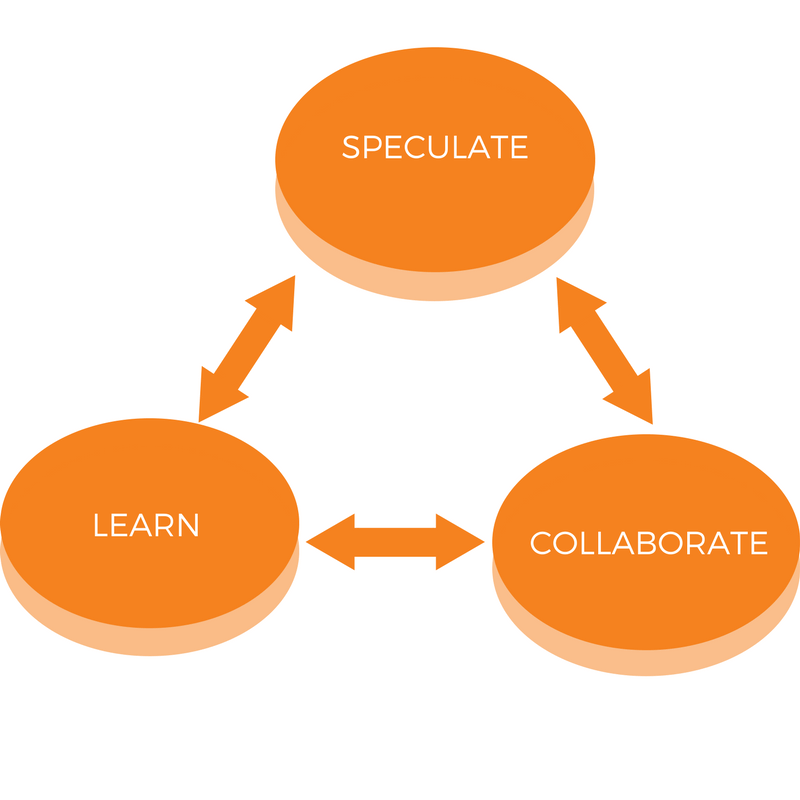
1. Speculation
Relies on bug and user reports guiding the project. Constitutes:
- Project initiation
- Risk-driven Adaptive cycle planning
- Understanding the exact nature of the software and the requirements of the users
2. Collaboration
Concurrent component engineering works on three principles:
Communication, Teamwork, Individual Creativity
It has more concern about collaboration and dealing with concurrency than about the details of designing, testing, and coding. This phase is shown as multiple boxes because team members or sub-teams are working concurrently to deliver the working components.
3. Learning
Quality review and Final Q&A release
This generates the bug reports and user reports used during the first phase of the project, and the cycle repeats itself. During this phase, components are implemented and tested.
ASD is derived from the filtered practices of Rapid Application Development (RAD) and Evolutionary Life Cycles. Adaptive Software Development was then expanded to incorporate adaptive approaches for the management, with prediction replacing Planning.
Extreme Programming
Extreme Programming (XP) as a software development methodology is applied to enhance software quality and make it adaptive to fluctuating customer or market requirements.
Being an Agile methodology it favours consistent “releases” in tiny development cycles, which is intended to improve productivity and introduce areas where new requirements can be induced.
Extreme Programming is a set of easy and discreet practices that club together into an agile development procedure. XP is a great general-purpose method for making software. Everybody can follow it.
The basic idea is:
- Take practised effective team techniques
- Push them to their acme
Given that, none of the other Agile methods are transparent, or as broad in scope as XP.
Let’s take an instance of Scrum, it is roughly equivalent to XP’s approach as a whole team towards a project. While there are distinctions in the details, it is okay to say that Scrum is a subset of XP. Also, many Scrum teams augment their procedures by contributing in many of the practices of XP such as Acceptance Testing, Pair Programming, Continuous Integration, and particularly Test Driven Development.
Of all the Agile methods, only XP offers profound disciplines for the way developers do their daily work. Of these principles, Test Driven Development is the most impactful. Given below are some good XP practices, browse them and spot the differences yourself:
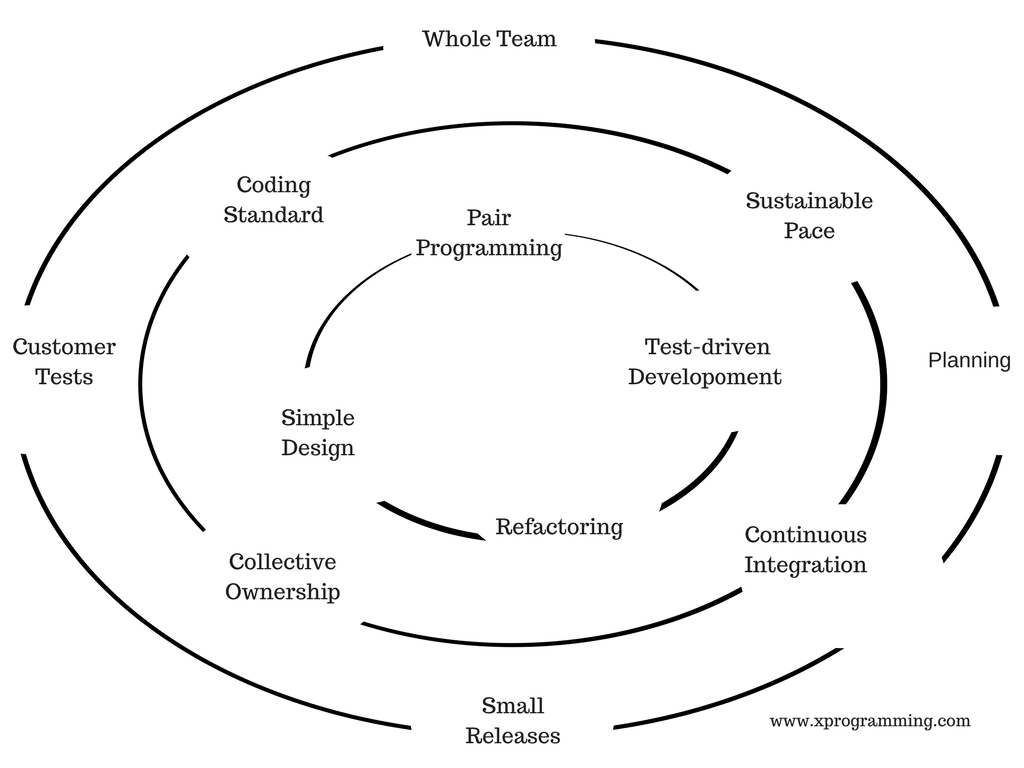
Dynamic Software Development Method
The DSDM was developed to eliminate some of the gaps in the RAD method by giving a framework which considers the entire development cycle. The main features of the DSDM are:
- User Engagement
- Iterative and Incremental Development
- Improved Delivery Frequency
- Integrated tests at every phase
The acceptance of delivered products depends directly on fulfilling requirements.

Three core principles followed in DSDM:
Timeboxing
Timeboxing technique used in DSDM to achieve the certain task at given interval but not more than 2, 4, or 6 weeks.
MoSCoW Rules
In order to complete the project within budget, the team has to focus on finishing the most important features for the end user first. The DSDM techniques to weight the significance of requirements are the MoSCoW rules. And the rules are as follow:
- Must have: All features classified in this group are a must to be implemented and if they are not, the system wouldn’t move ahead.
- Should have: These features are important to the system but can be left out if time constraints are stricter.
- Could have: These features integrate the system with functional items which can easily be reassigned to a later timebox.
- Want to have: These features serve a limited group of users and are of least value among all.
Prototyping
Prototyping in DSDM project satisfy 2 principles:
- Frequent delivery
- Incremental development
Crystal
Crystal contains a family of agile methodologies like Crystal Clear, Crystal Yellow, Crystal Orange and others, whose characteristics are guided by a number of factors including team size, critical system, and project requirements. This Crystal family addresses the understanding that each project might need a tailored set of doctrines, and procedures in order to meet the project’s unique characteristics.
Crystal focuses on six primary aspects: people, interaction, community, communication, skills, and talents. ‘Process’ is considered secondary.
There are seven common properties in Crystal that imply the higher possibility of success. The methods are very flexible and avoid rigid processes because of its human-powered or people-centric focus.

Lean
Lean comes from Lean Manufacturing and is a set of principles for achieving quality, speed & customer alignment.
It is the Lean methodology that stemmed the idea of why agile works. Here is the list of things it does:
- Eliminate Waste
- Build In Quality
- Generate Knowledge
- Stick to Commitment
- Deliver Quick
In a nutshell, Lean relentlessly gives up upon anything that isn’t adding value and only works on what is important first. Eliminating waste implies eliminating worthless meetings, tasks and documentation.
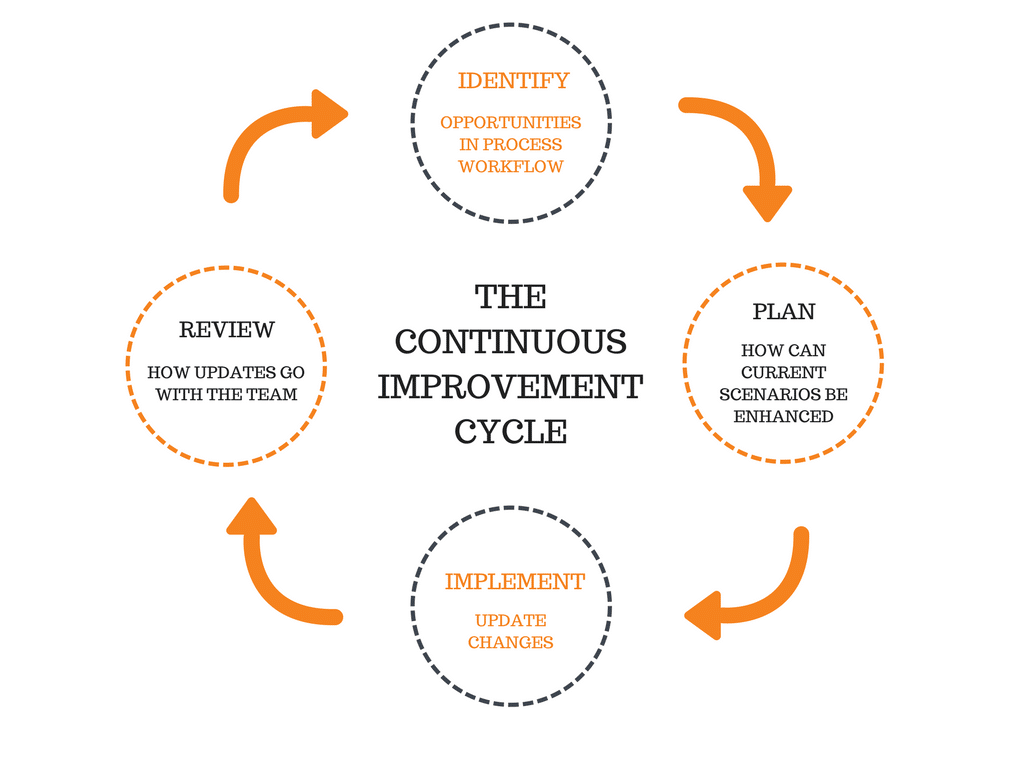
Implementation and Roles
- Pick The Right Project
- Organise Roles In Hierarchy
- Estimation Of Effort Is Still Key
- Know And Control Limitations
- Manage Tension
- Metrics: “Power Without Control Is Useless”
- Quality Stays On The Top
- Stick To The Methodology Rigorously
- Revise And Adjust The Method
- Maximize Visibility
- Manage Expectations
How To Manage Your Budget With Agile Methodology
Customised Work Packages
Before proceeding with the cost here, you need to understand how much a mobile app can actually cost you.
The deal with the budget in Agile Methodology is that the whole project is broken down into small ‘releases’ that constitute the final outcome.
Each release is a work package whose price is customised. As a work package is completed, future packages are estimated accordingly. This lets for a level of re-prioritisation and new/revised features to sneak in.
Easy Termination
It’s your call to terminate the project soon enough if you don’t achieve the ROI you expected.
This is permitted at any instance and is legit as long as the project team and customer have maintained a firm, and trusting work collaborative relationship. The benefit for the customer is that the project will wind up early, having completed all the valuable features needed to make the product viable. In return, the supplier is paid 20 percent of the liable contract value and offsets the risk of the staff.
Change Is Always Welcomed
Change is something that’s intact in the blood of Agile software delivery. You are just not expected to know everything that is needed to make your product successful.
So you can change about anything and everything you feel does not comply with your goals throughout the cycle.
You can change things based on relevant data and feedback to ensure the delivery of the right product. At the end of an iteration, changes can be swapped out for old features that are no longer necessary or a priority. As long as the change is of equal value, there is no further cost.
Here is Barry Boehm’s “Cost of Change” graph:

Work Overhead
Through the life of a project, more features may be picked that will not be achievable under a fixed price contract. For this scenario, either additional newly priced work packages can be added to the end of the project or reverted to time and materials.
Ranged Estimates
There are two methods that estimates can be covered in an Agile project record: a range of span or a range of characteristics. A range of duration provides an estimate to assume that the project or work package would take about 12 to 16 weeks for a given expanse. However, calculating duration adds expense as you keep project team members for an extended time, or it intends they can’t be delivered to work on other development projects.
What Methodology Fits Your Project Best?
Agile development methodology helps an organisation to learn faster, and testing issues to resolve.
Also, customers’ feedback becomes the motivation factor. A team supporting the method itself triggers the development process, and everyone gets it done perfectly.
But it is very important to understand that, no single methodology is a silver bullet, so the gambit is to determine which methods work for you according to company size, culture & budget and tune your methodology to suit your personal needs.
For smaller projects and smaller team, Extreme Programming (XP) works well, while in the case of complex projects and bigger team Scrum methodology can be implemented. For quicker deliveries, the Lean development methodology is advisable.
For any further assistance, we are always there to help you.




